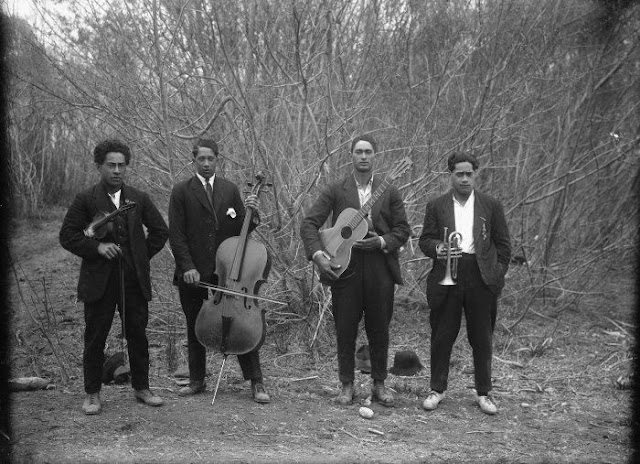Captivating Photos
About a decade ago I first came across a photograph of a group of unidentified Māori musicians in a copy of the Turnbull Library Record. According to the Alexander Turnbull Library catalogue entry for it, even the photographer is unknown.
It is a captivating and intriguing photo – a group of unknown (but very hip and in some respects quite contemporary-looking) Māori men, standing in an unknown location being photographed by a person unknown on an unknown date or even decade.
In 2021 I shared the photo on social media and asked if anyone knew who the men were. Surely they must have descendants today who would be able to identify the group.

Want to read the full issue?